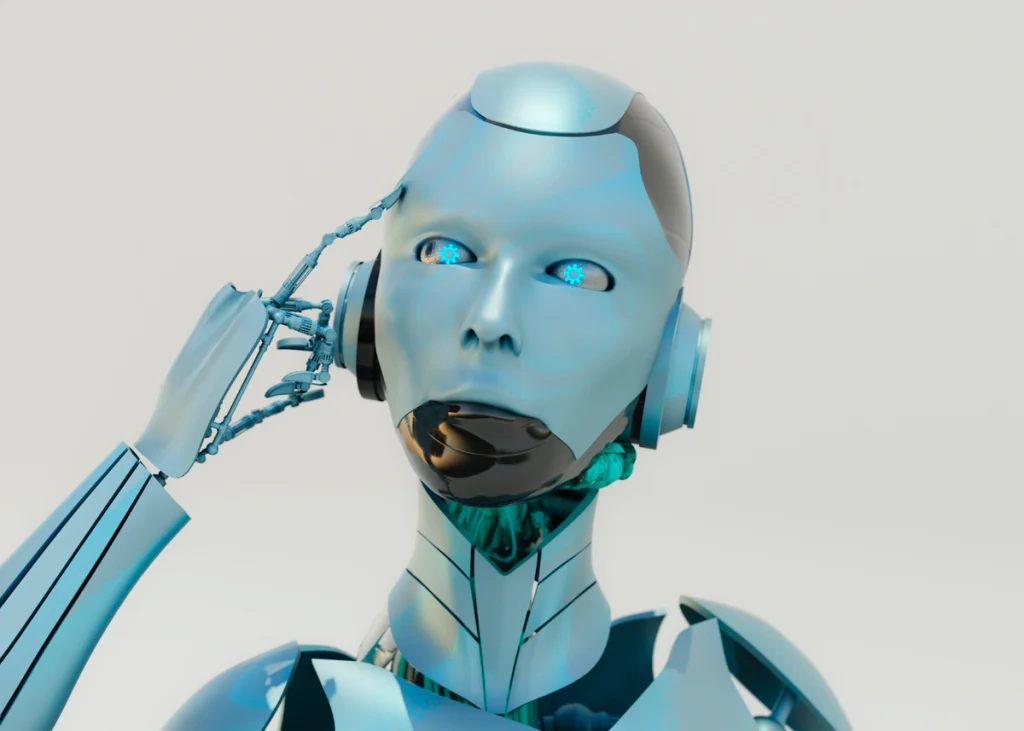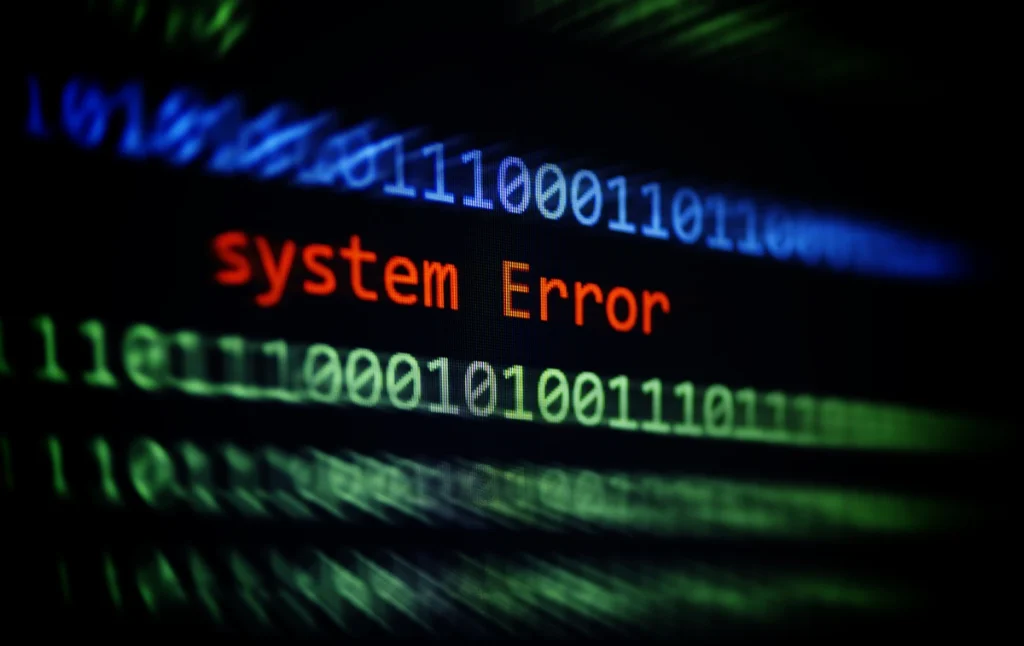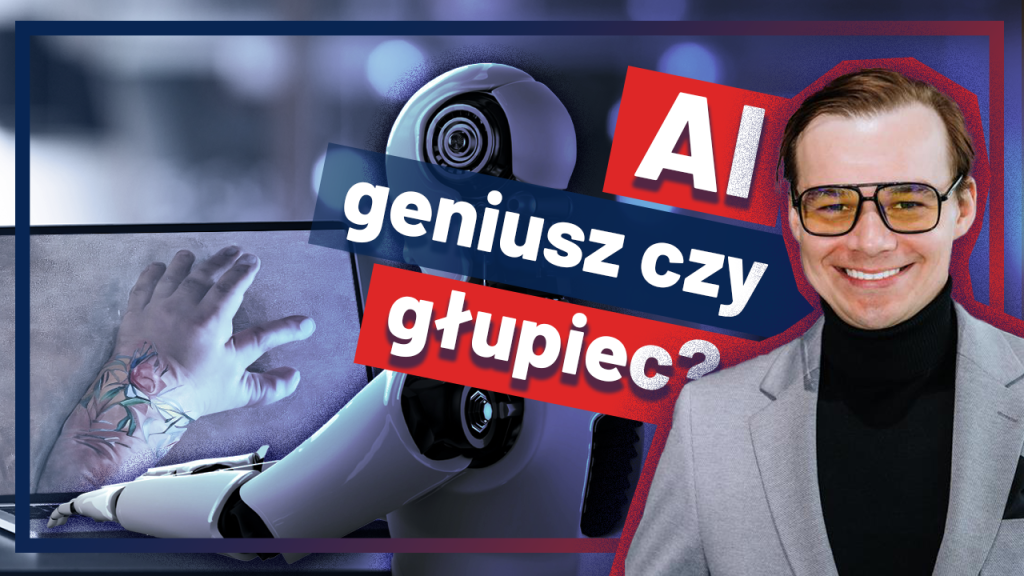
NEWSLETTER
Wpisz swój adres e-mail i zyskaj e-booka
Bez niechcianej poczty ani reklam
Tylko merytoryczne treści z obszaru digitalizacji produkcji

Wyobraź sobie, że stoisz na hali produkcyjnej, obserwując ramię robota, które pracuje bez zarzutu od miesięcy. Nagle się zatrzymuje w połowie cyklu i cofa się do pozycji bazowej. Część, którą obsługiwało, spada na podłogę.
– Głupia maszyna – rzuca zdenerwowany operator.
Prawda jest jednak inna: ta maszyna wcale nie jest głupia. Po prostu myśli w zupełnie inny sposób niż Ty.
Dziś, po latach pracy w zakresie automatyzacji produkcji mogę z całym przekonaniem powiedzieć, że maszyny wykonują dokładnie to, czego od nich wymagamy – ani grama więcej, ani mniej. A my? Traktujemy je, jakby miały intuicję. I tu właśnie zaczyna się problem.

Odpowiedź jest prosta – nie myślą. Działają. Program algorytmu sterującego to ich jedyna instrukcja przetrwania. Każda maszyna – od prostego paletyzera po robota w smart home – wykonuje swój cykl działania w pętli:
Ten cykl powtarza się tysiące razy na minutę.
Można to porównać do naszego stanu o poranku. Dzwoni budzik. Wyłączam. Sprawdzam, jak się mam. Ustalam, jaki to dzień tygodnia, uruchamiam program „poniedziałek rano” i idę do łazienki, po drodze uruchamiając ekspres do kawy. Automatycznie wykonuję poszczególne czynności – diagnoza, bodźce, schemat i działanie.

Dołącz do biuletynu i zyskaj dostęp do 40% książki
„15 kroków do zakupu systemu informatycznego”.
Jak widać, maszyna nie zna kontekstu. To jak strona internetowa pokazująca błąd 404. Serwer nie wie, że jesteś sfrustrowany czy że się spieszysz. Wie tylko, że „strona nie została odnaleziona”, więc uruchamia skrypt: „pokaż domyślną wiadomość”. Tak, maszyna w nieprzewidzianych sytuacjach uruchamia tzw. program domyślny – pewnego rodzaju bezpiecznik. Trochę jak aplikacja w telefonie, która w razie błędu po prostu się wyłącza. To nie głupota – to zaprogramowana ostrożność.
Spójrz na robot sprzątający. Dokładnie mapuje salon, uczy się, gdzie są wszystkie meble, opracowuje efektywny plan sprzątania. Pewnego dnia przestawiasz meble. Biedny robot wjeżdża do pokoju, spodziewając się, że stolik kawowy będzie w rogu, ale nic tego – teraz jest na środku salonu. Odkrywa, że jego mapa jest błędna. Co robi?
Opcja 1: Próbuje się dostosować i rozgryźć nowy układ.
Opcja 2: Wykonuje domyślny protokół „jestem zdezorientowany” – wraca do stacji ładującej i czeka na interwencję człowieka
Większość tego typu urządzeń wybiera drugą możliwość. Nie dlatego, że te maszyny są głupie, ale dlatego, że są zaprogramowane na bezpieczeństwo.

Kiedy robot produkcyjny zatrzymuje się niespodziewanie, zazwyczaj robi dokładnie to, co powinien. Dlaczego? Z prostej przyczyny: nie możemy zaprogramować każdego możliwego scenariusza. Robot może rozpoznać nieoczekiwane zmiany temperatury, części, które nie spełniają specyfikacji czy wahania napięcia. Dlatego w razie nieoczekiwanych zdarzeń czy danych wraca do swojego „programu bazowego”.
To jak wyłącznik różnicowo-prądowy w Twoim domu – nie zważa na to, że właśnie gotujesz obiad dla teściów. Po prostu stwierdza, że coś jest nie tak i odcina prąd.
– Ale co ze sztuczną inteligencją? – możesz zapytać. – Czy maszyny z AI nie powinny być mądrzejsze?
Tak i nie.
AI daje maszynom więcej scenariuszy. Ale nawet najinteligentniejszy system AI w produkcji ma pewne ograniczenia:
Nawet inteligentny odkurzacz nie ucieknie z płonącego pokoju – najwyżej zarejestruje podwyższoną temperaturę (o ile ma czujnik) i się zatrzyma.
System kontroli jakości napędzany AI może rozpoznać 99,7% defektów poprawnie, ale gdy napotka te 0,3% przypadków brzegowych, wciąż wraca do: „W razie wątpliwości, skieruj do przeglądu przez człowieka”.
Następnym razem, gdy maszyna zrobi coś, co wydaje się nielogiczne, pamiętaj: prawdopodobnie próbuje chronić siebie, Twój produkt lub Twoich ludzi. To „głupie” zachowanie może być najmądrzejszą rzeczą, jaką mogła zrobić, biorąc pod uwagę swoje ograniczone rozumienie świata.
Maszyny nie mają złych dni, nie rozpraszają się i nie chodzą na skróty. Po prostu podążają za swoim oprogramowaniem – nawet gdy to oprogramowanie prowadzi do pozornie irracjonalnego zachowania.
Szczerze? W świecie, gdzie nieprawidłowo działająca maszyna może spowodować obrażenia lub ogromne straty produkcyjne, wolę maszynę, która zatrzymuje się zbyt często, niż taką, która pracuje dalej, gdy nie powinna.
Obejrzyj kolejny odcinek Digitalizuj.pl, jeśli chcesz lepiej zrozumieć, jak działają maszyny, jak pracuje AI i dlaczego transformacja cyfrowa to nie tylko kwestia kodu.
